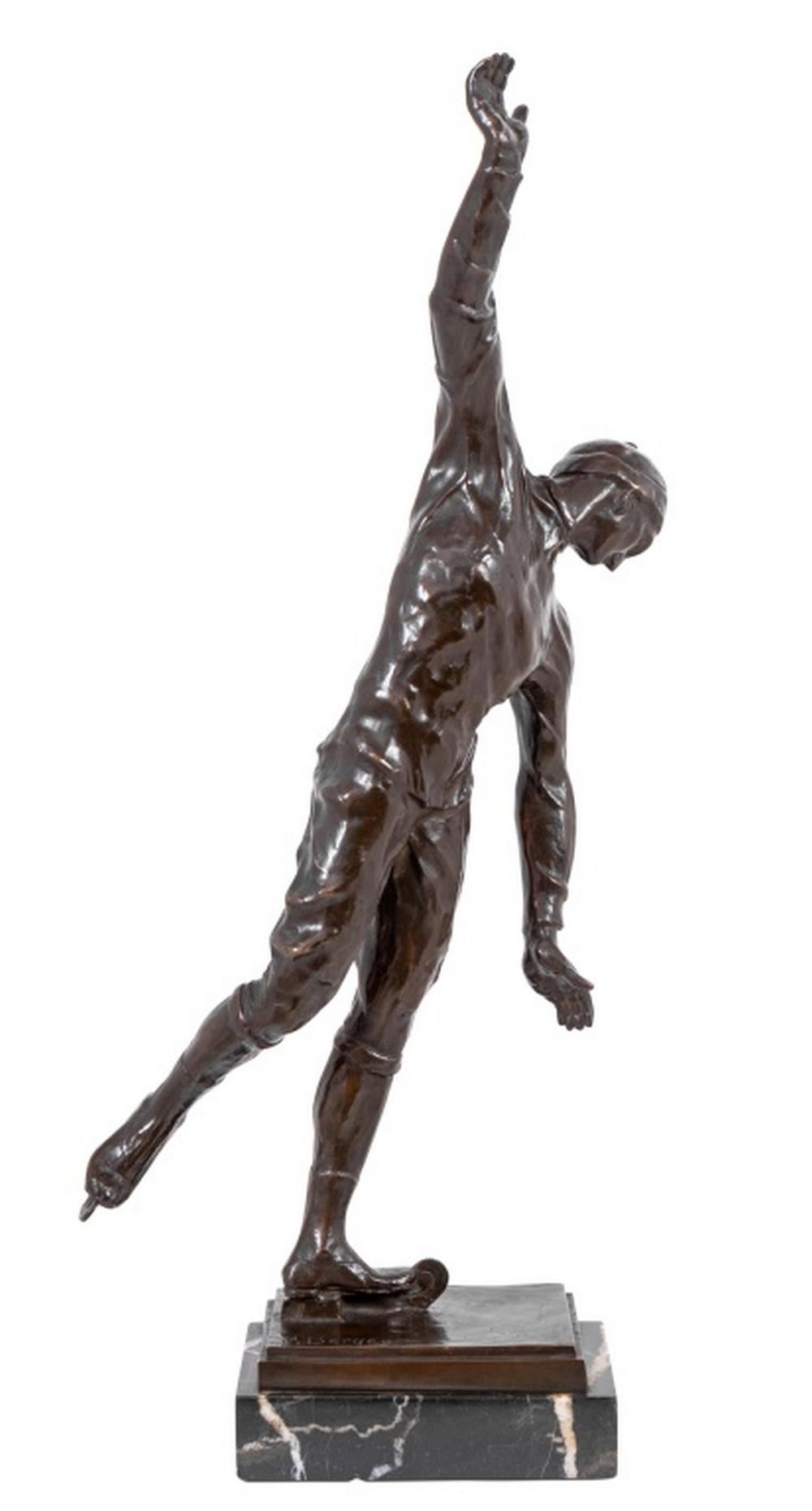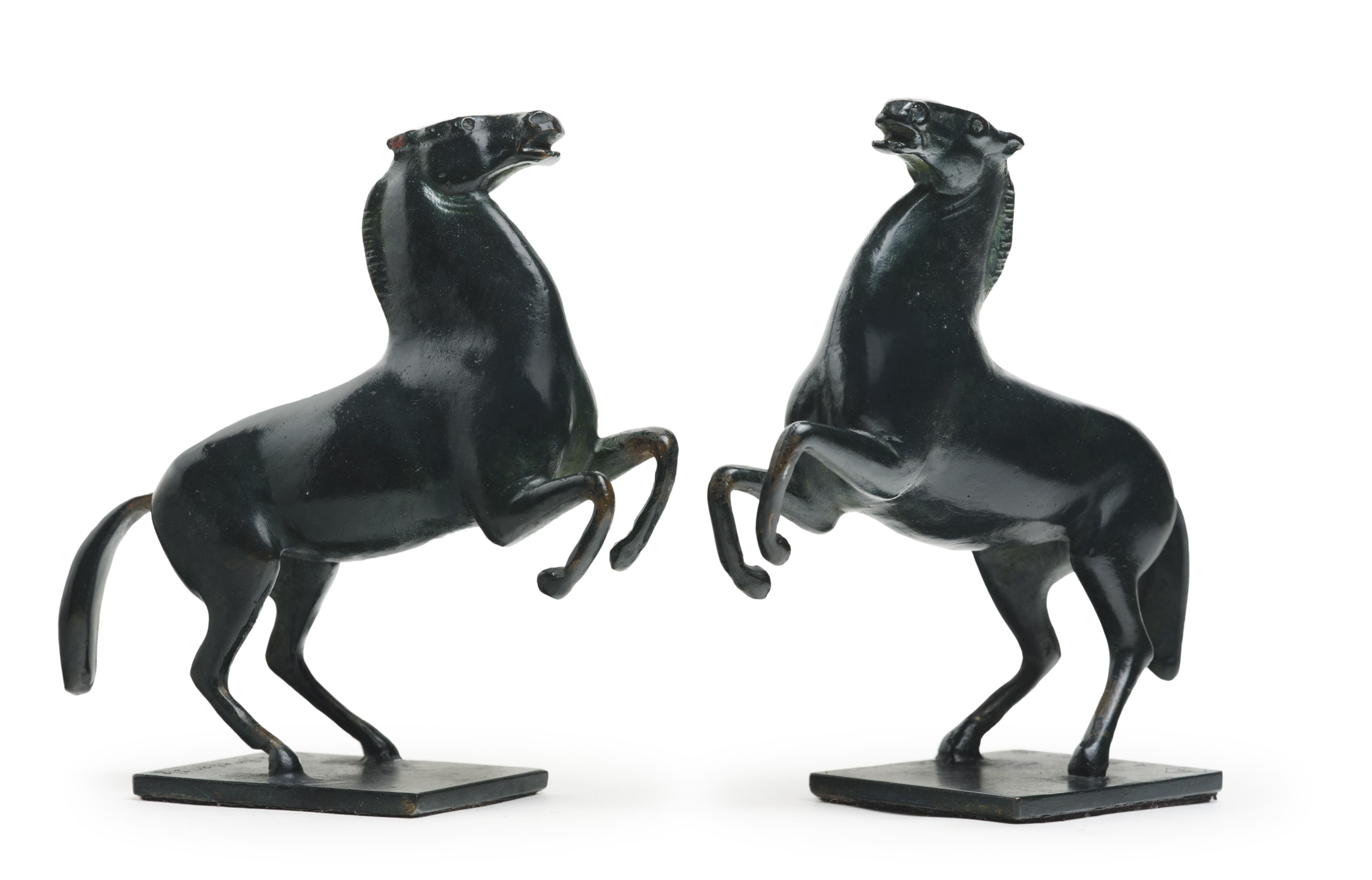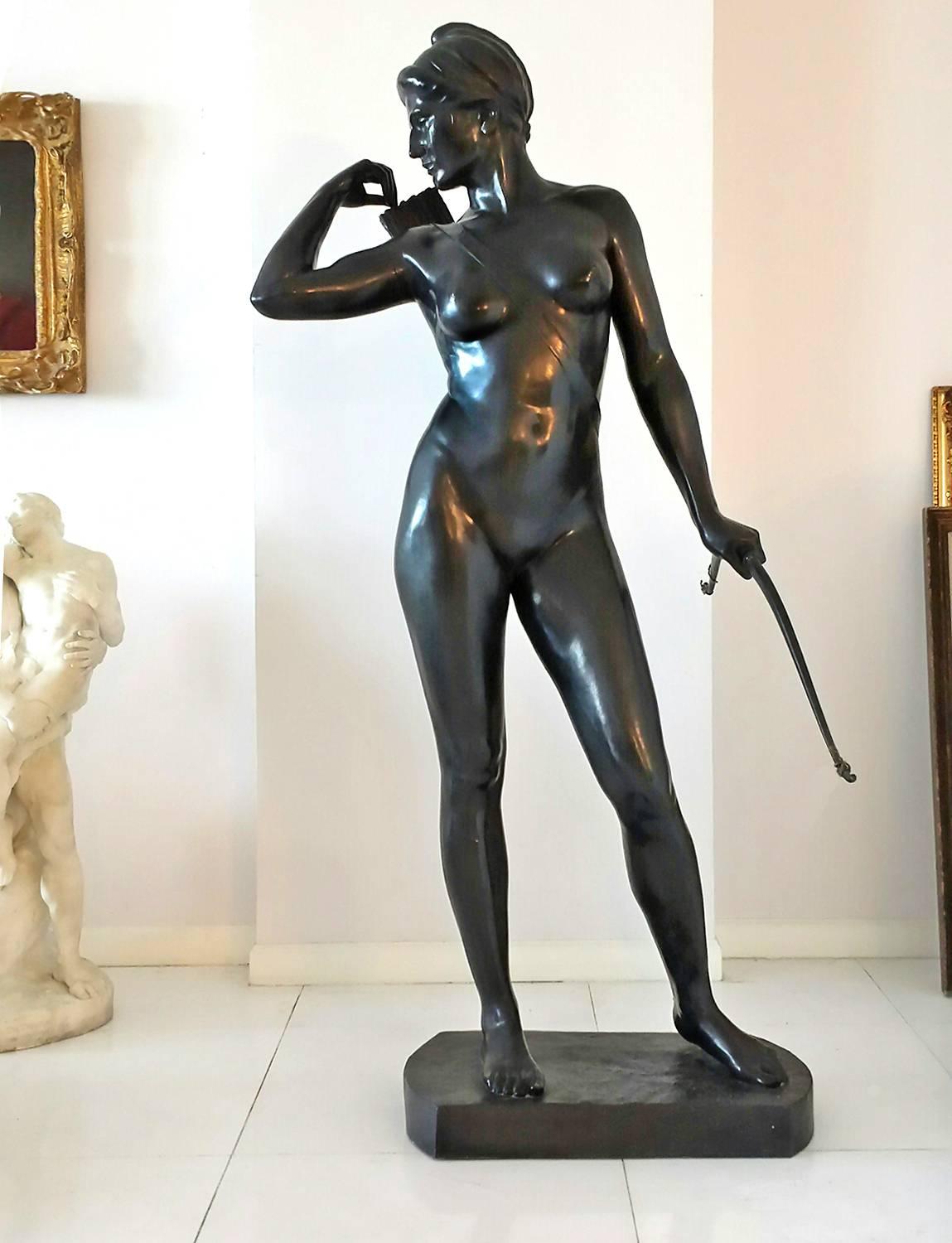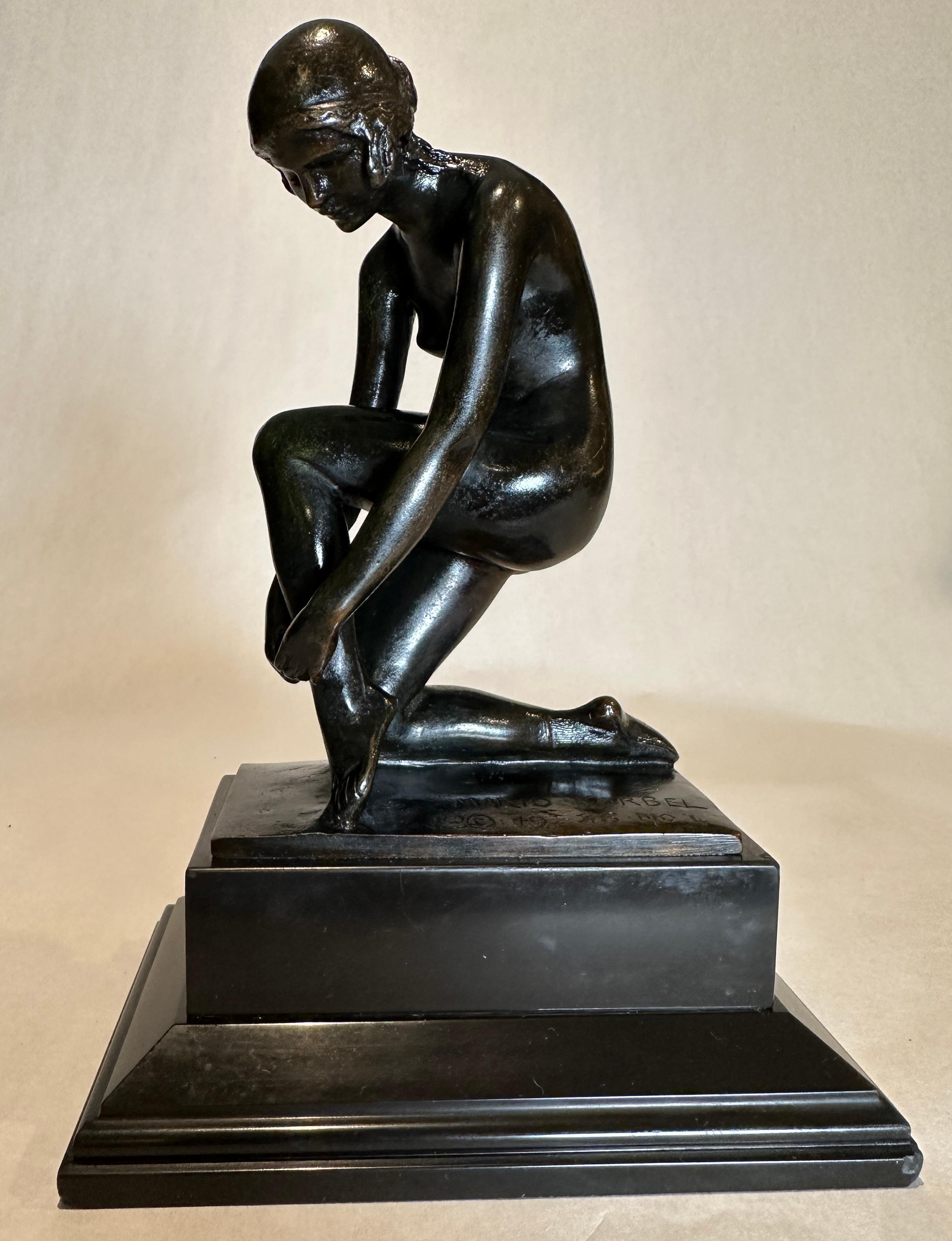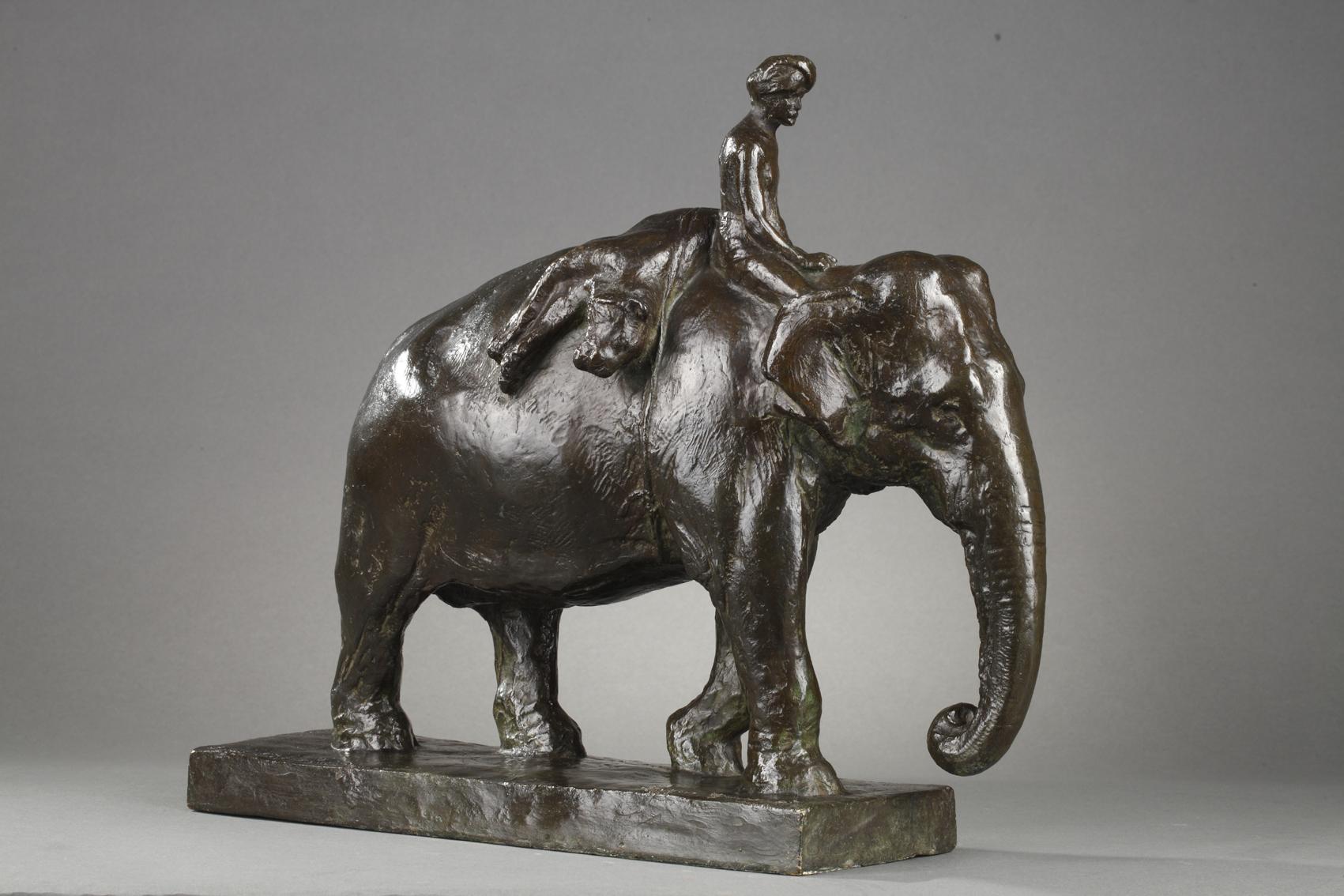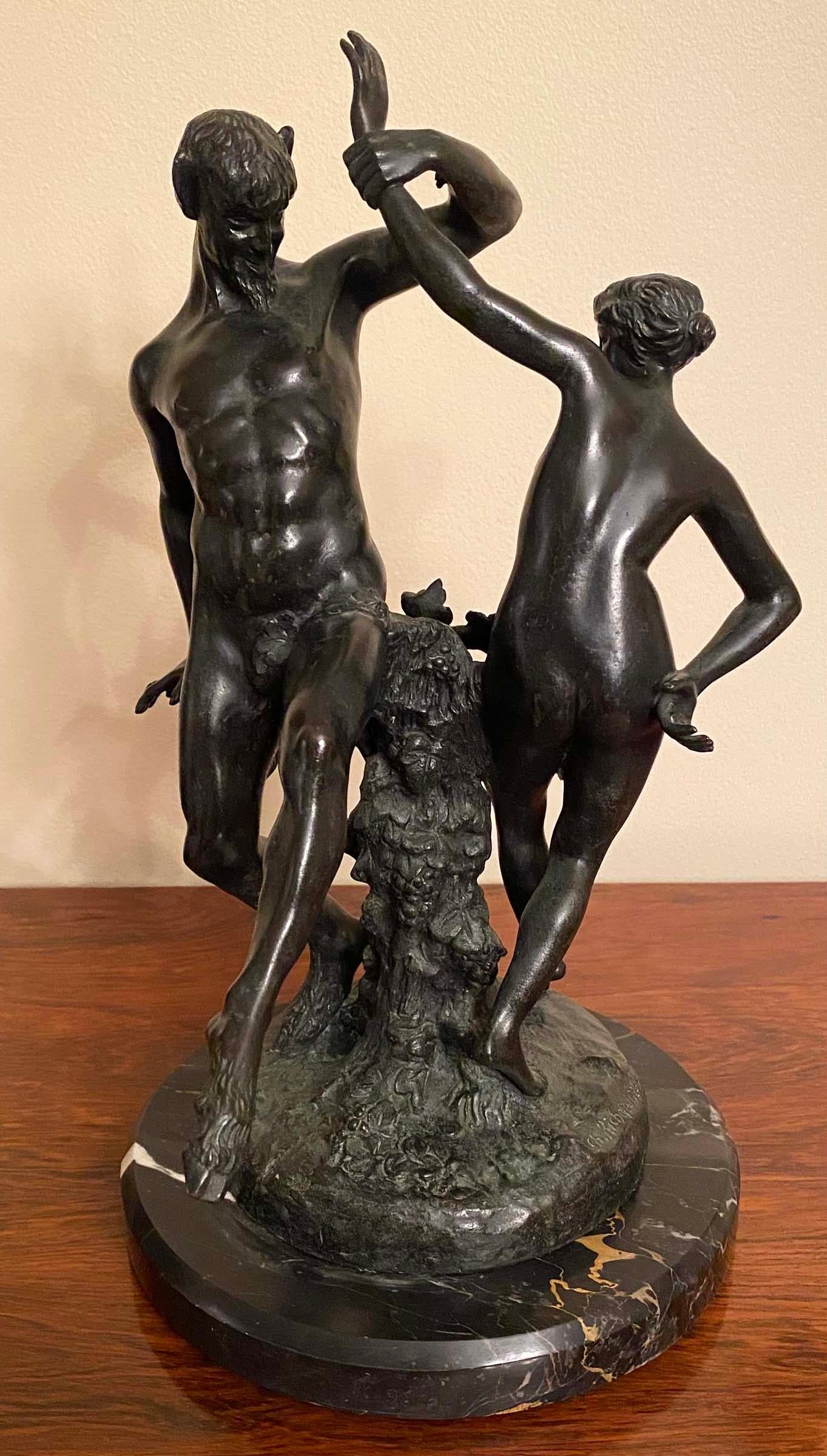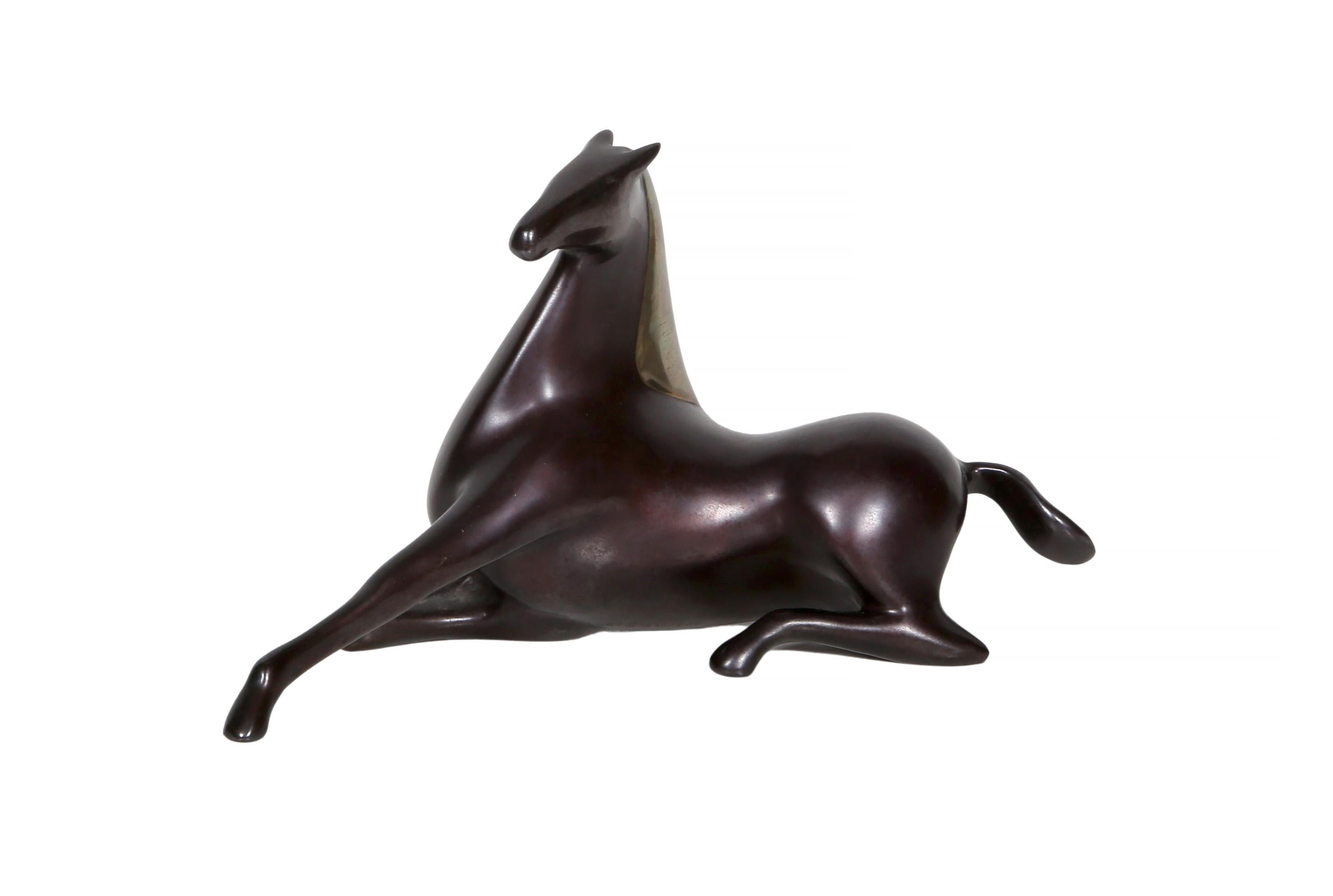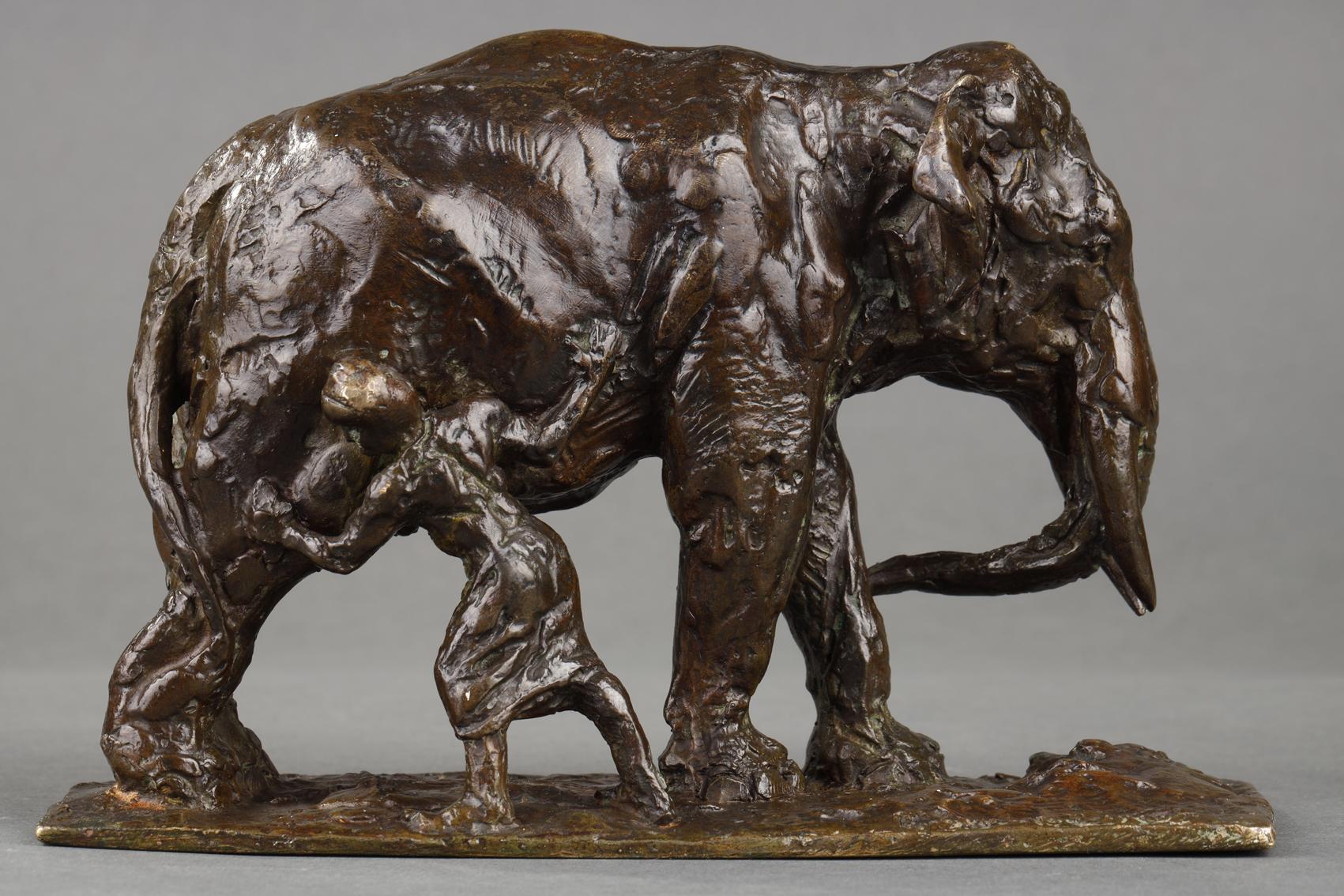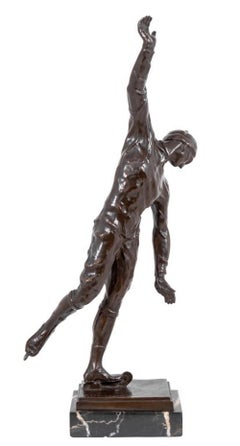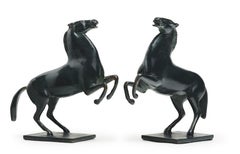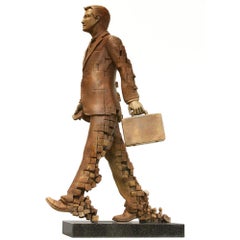
Body Corporate, Contemporary Bronze Sculpture
View Similar Items
1 of 11
Stephen GlassborowBody Corporate, Contemporary Bronze Sculpture2010
2010
About the Item
- Creator:Stephen Glassborow (1951, Australian, British)
- Creation Year:2010
- Dimensions:Height: 72.84 in (185 cm)Width: 21.66 in (55 cm)Depth: 11.82 in (30 cm)
- Medium:
- Movement & Style:
- Period:
- Condition:
- Gallery Location:WOOLLAHRA, AU
- Reference Number:Seller: https://artpark.com.au/1stDibs: LU2466212026522
Stephen Glassborow was born in Hammersmith, England and studied sculpture at the Brighton College of Art, before becoming a permanent resident of Australia in 1983. He is now one of Australia’s most successful and important artists, where public sculptures can be found in Canberra, Sydney, Melbourne and regional Victoria. Glassborow specialises in bronze and draws inspiration from Greco-Roman ruins, art deco forms as well as contemporary abstracts to present human figures in a unique style. In each sculpture, his intention is to capture the figure in a merging of real and abstract, inspired by a pose, an idea a phrase or a context. His work sells internationally, in many different countries, and he exhibits regularly in both the United States and the UK as well as all over Australia. Public works by Glassborow can also be found internationally, in cities such as Bangkok, Kuala Lumpar, Singapore, Hong Kong, Shanghai and Seoul.
Authenticity Guarantee
In the unlikely event there’s an issue with an item’s authenticity, contact us within 1 year for a full refund. DetailsMoney-Back Guarantee
If your item is not as described, is damaged in transit, or does not arrive, contact us within 7 days for a full refund. Details24-Hour Cancellation
You have a 24-hour grace period in which to reconsider your purchase, with no questions asked.Vetted Professional Sellers
Our world-class sellers must adhere to strict standards for service and quality, maintaining the integrity of our listings.Price-Match Guarantee
If you find that a seller listed the same item for a lower price elsewhere, we’ll match it.Trusted Global Delivery
Our best-in-class carrier network provides specialized shipping options worldwide, including custom delivery.You May Also Like
Balancing Elephant, Circa 1930s, Art Deco, Louis-Albert Carvin (1875-1951)
Located in SANTA FE, NM
Balancing Elephant
Louis-Albert Carvin (France, 1875-1951)
Bronze, marble
Circa 1930s, Art Deco
8 x 7.5 x 2 (4 1/4 x 7 1/2 x 1 7/8 figure) inches
Artist Louis-Albert Carvin, born in Paris in 1875, was exposed to art from an early age through his painter father. Carvin's formal education in art began at the École des Beaux-Arts, where he studied under artists like Émmanuel Frémiet and Georges Gardet. Over the years, artist Louis-Albert Carvin became a renowned sculptor, dedicating his life’s work to the modeling of human and animal figures. He studied under Fremiet and Gardet and became a member of the Société des Artistes Français, exhibiting at the Salon des Artists Francais from 1894 until 1933 winning the Medal of Honor in his first year in 1894.
Remarkably, he sculpted La Muse de l’Aviation, the bronze trophy...
Category
1930s Art Deco Figurative Sculptures
Materials
Marble, Bronze
Leo Berger "Skater" Patinated Bronze
Located in Astoria, NY
Leo Berger (Swiss, 1885-1973) "Skater" Patinated Bronze Sculpture, early 20th century, possibly depicting the Swedish ice skater Gillis Grafstrom, on a marble plinth, signed "L Berge...
Category
Early 20th Century Art Deco Figurative Sculptures
Materials
Bronze
Pair of Prancing Horses, two bronzes signed and numbered by Arno Breker
Located in PARIS, FR
An official artist of the Nazi regime, trained in Montparnasse in the 1930s, Arno Breker continued to sculpt after the fall of the Third Reich, producing large-scale public commissions in Germany and portraits of prominent figures. The two small bronzes presented here, dated around 1978, are part of a long tradition of prancing horses dating back to antiquity. The asymmetrical treatment of the two front legs and the inclination of the head make these two copies of the same artwork a highly decorative pair.
1. Arno Breker, a prolific sculptor, from the Bohemia of Montparnasse to the commissions from the Third Reich ... and from the Federal Republic of Germany
The son of a stone carver, Arno Breker studied fine art and anatomy in his native Elberfeld. At the age of 20, he entered the Düsseldorf Academy of Art. He moved to Paris in 1926, where he continued his training in the studio of Maillol, who dubbed him "the German Michelangelo of the twentieth century". He shared a studio with Alexandre Calder and frequented Jean Cocteau, Foujita, Brancusi, Pablo Picasso and other artists of the bohemian Paris of the time. It was also in Paris in 1933 that he met Demetra Messala, the daughter of a Greek diplomat who posed for Maillol and Picasso, whom he married in 1937. Having won the Prussian Prix de Rome in 1932, he left Paris to stay at the Villa Massimo, the German Academy in Rome.
Returning to Germany in 1934, his style evolved towards a more marked imitation of ancient sculpture. He created two monumental statues for Berlin's Olympic Stadium, before being appointed professor at the Berlin College of Fine Arts in 1937. He came to the attention of the Reich Propaganda Ministry, which awarded him several commissions and provided him with three large studios in which Breker produced many monumental sculptures to the glory of the regime. On June 23, 1940, Breker accompanied Adolf Hitler during a visit to Paris. During the Occupation, his political connections enabled him to intervene on behalf of many artists pursued by the Nazis: for example, he protected Pablo Picasso (then a Communist) from Kommandantur officers.
Most of Arno Breker's work was destroyed in Berlin at the end of the war in 1945 by bombing and intentional destruction perpetrated by soldiers of the victorious powers. After the fall of the Nazi regime, however, Arno Breker was never prosecuted. He opened a new studio in Düsseldorf, where he sculpted until his death in 1991.
He then carried out several public commissions in Germany (Bayreuth, Wuppertal), as well as portraits of numerous personalities, including King Mohammed V of Morocco, Léopold Sedar Senghor (commissioned by the Académie Française in 1978) and the two chancellors of the Federal Republic of Germany, Konrad Adenauer and Ludwig Erhard. The Arno Breker Museum in Nörvenich is now exhibiting some of his artworks.
2. Related artworks: from the Wild Horses of the Quirinal to the Horses of Marly
The prancing horse is a major iconographic theme, found in a series of sculptures from Antiquity, the Renaissance and the Classical Age. Various photos from Arno Breker's studio in Berlin confirm the predominant place of equine representations in his work (alongside male nude statues), and confirm that this reduced version created in 1978 is part of the artist's preferred repertoire.
Prancing horses are generally associated with a male figure in a group that, through a reference drawn from Antiquity, symbolizes man's domination over nature. In this respect, it is very interesting to compare our small bronzes with the horse forming part of a large sculpture by Arno Breker (made in 1936 and probably destroyed in 1945) depicting Alexander taming Bucephalus.
This statue is itself directly inspired by one of the best-known works of 18th-century French sculpture...
Category
1970s Art Deco Figurative Sculptures
Materials
Bronze
Magpie
By Jan and Joel Martel
Located in PARIS, FR
Magpie
by Jan and Joël MARTEL (1896-1966)
A rare and genuine bronze sculpture with a dual patina, dark brown and gilded
Signed to the front of the base " J. Martel "
Cast by " Susse...
Category
1920s Art Deco Figurative Sculptures
Materials
Bronze
Young girl sitting at her toilet
By Joseph Bernard
Located in PARIS, FR
"Young girl sitting at her toilet"
also known as "Young girl with braids"
by Joseph BERNARD (1866-1931)
Sculpture in bronze with a nuanced brownish dark green patina
Signed on the ...
Category
1920s Art Deco Nude Sculptures
Materials
Bronze
Antique American Art Deco Bronze Sculpture Statue of Diana French Foundry Stamp
By Edward McCartan
Located in Portland, OR
Antique American Bronze sculpture of Diana The Huntress with a Doe, by Edward Francis McCartan (1879-1947), New York circa 1920.
The Bronze depicting the Roman Goddess Diana, holding...
Category
1920s Art Deco Figurative Sculptures
Materials
Bronze

